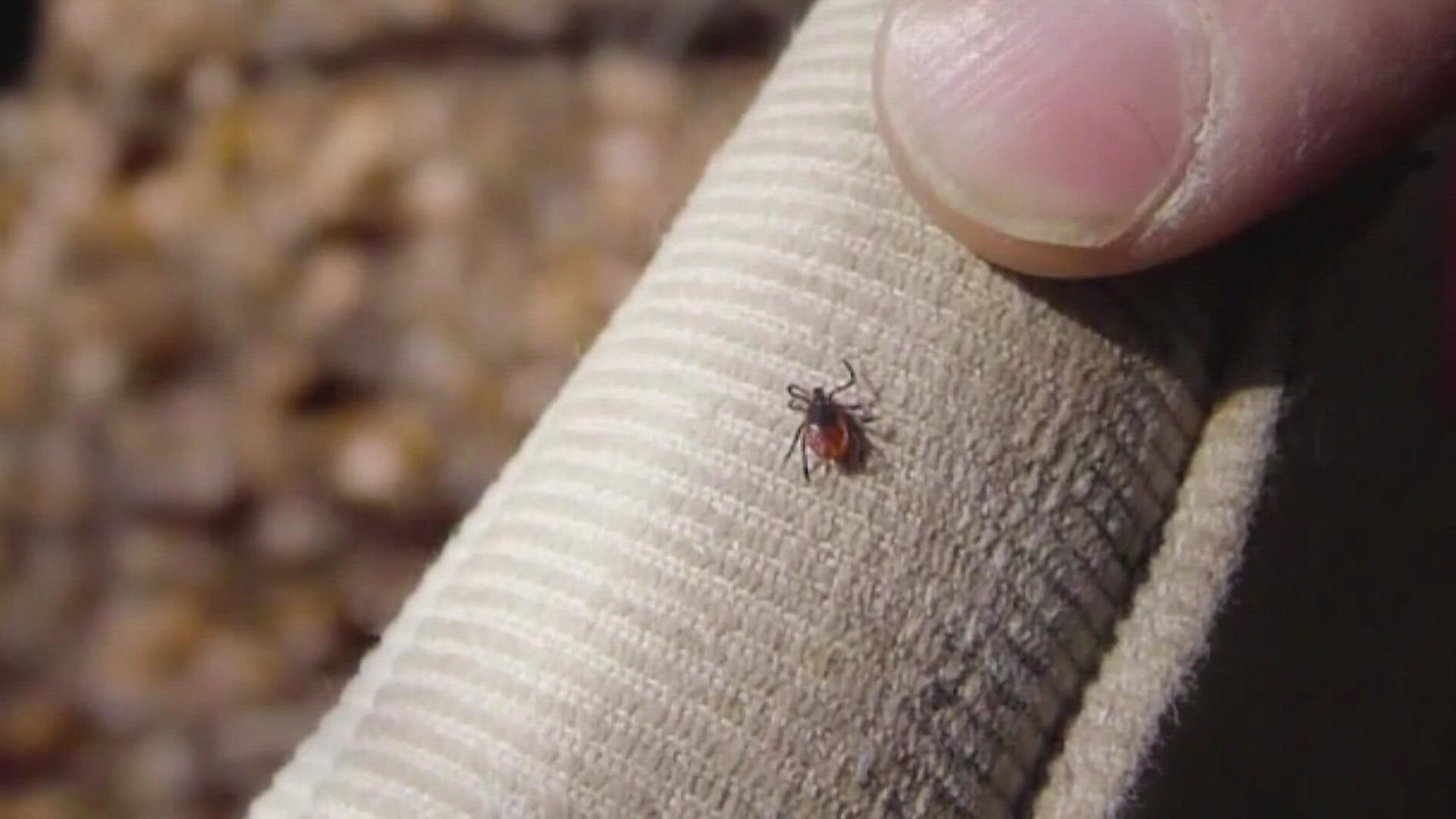ARROWSIC, Maine — New research on how deer ticks became the dominant species of ticks in a midcoast forest could help researchers track their emergence into new habitats.
The data spanning three decades were collected from thousands of ticks on small mammals.
Jack Witham is a retired associate scientist with the University of Maine's Center for Research on Sustainable Forests. While tracking animals and insects in the Holt Research Forest back in the 1980s, Witham saw a trend that needed to be investigated.
"We were seeing these ticks and said, 'let's help,'" Witham said.
In 1989, he began working with Susan Elias, a staff scientist at the Maine Medical Center Research Institute Vector Borne Disease Lab. Researchers started monitoring the arrival of black-legged ticks, also known as deer ticks, carrying Lyme and other diseases from southern New England.
"We do five consecutive days on one trapping grid," Witham said.
Witham showed NEWS CENTER Maine how he collected ticks off of voles, squirrels, and white-footed mice by setting up dozens of metal traps filled with oatmeal.
At first, Witham only found vole, squirrel, and dog ticks feeding on small mammals. The first deer tick was found on a red squirrel in 1996. Eleven years later, the deer tick population was the dominant tick species.
"A lot of times, we couldn't pull off every single tick because they were so numerous," Witham said.
Witham collected more than 3,000 ticks from more than 10,000 animals — the majority from white-footed mice. Researchers pointed to several factors, including warmer winters and an increase in the whitetail deer in the 350-acre forest owned by the nonprofit the Maine Tree Foundation.
The data is also helping track new deer tick populations in Maine.
"We don't want people to be surprised because they are starting to get deer ticks on them farther north," Elias explained.
Scientists hoped to continue collecting tick samples there, especially with the emergence of the Lone Star Tick. The pathogens they carry can cause meat allergies.
"We are concerned we are going to see an emerging population of Lone Star ticks that could be established, and they feed on white-tailed deer," Elias said.
After thousands of hours of research and beating Lyme and Anaplasmosis, Witham hung up the traps in December 2021.
But he hoped the study, published in the Journal of Medical Entomology, would encourage more people to protect themselves against ticks and the diseases they carry.

